Dr Henry Reynolds – From Tasmanian patriotism to Australian nationalism: A little known story in three acts – Free lecture, all welcome: Royal Society Room, TMAG @8 pm Tuesday August 1
As the winner of the 2016 Clive Lord Medal Dr Reynolds will deliver the Clive Lord memorial lecture.
In histories of the emergence of Australian nationalism little notice is taken of Tasmania. This is unfair to Tasmania and leads to a misunderstanding of nationalism itself. This lecture will endeavour to correct the story and place Tasmania at the centre rather than the periphery of the evolution of a distinctive nationalism.
Henry Reynolds grew up in Hobart and was educated at the Hobart High School and the University of Tasmania. After spending several years overseas he took up a lectureship at the Townsville University College, now James Cook University. He spent thirty years in Queensland before returning to Tasmania in 2000. Much of his work has involved the history of Aboriginal-Settler relations. He has written more than 20 books which have reached a wide audience and have won many literary prizes.
Dr Meredith Nash – What is it like to be a woman in STEMM? Gender bias, sexual harassment, and the myth of meritocracy – Free lecture, all welcome: Royal Society Room, TMAG @8 pm Tuesday July 4
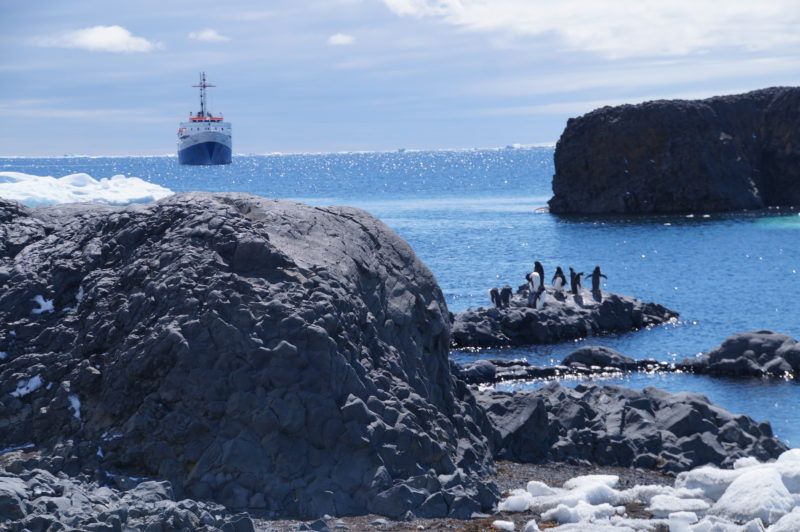 Women are underrepresented in science, technology, engineering, mathematics and medicine (STEMM) fields worldwide, particularly in leadership positions. For instance, Australian women comprise more than half of science PhD graduates and early career researchers, but just 20% of senior academics in universities and research institutes. This lecture will explore the reasons why gender bias in STEMM matters in more detail by drawing on data from an ongoing sociological study focusing on the leadership experiences of 25 women in STEMM fields who were all participants in a three-week transformational leadership program in Antarctica in December 2016. Key themes for discussion include women’s experiences of sexism and gender bias, sexual harassment and managing caring responsibilities. This lecture will also explore why women in STEMM often internalise the problem of gender equity in STEMM and blame themselves for their challenging organisational experiences.
Women are underrepresented in science, technology, engineering, mathematics and medicine (STEMM) fields worldwide, particularly in leadership positions. For instance, Australian women comprise more than half of science PhD graduates and early career researchers, but just 20% of senior academics in universities and research institutes. This lecture will explore the reasons why gender bias in STEMM matters in more detail by drawing on data from an ongoing sociological study focusing on the leadership experiences of 25 women in STEMM fields who were all participants in a three-week transformational leadership program in Antarctica in December 2016. Key themes for discussion include women’s experiences of sexism and gender bias, sexual harassment and managing caring responsibilities. This lecture will also explore why women in STEMM often internalise the problem of gender equity in STEMM and blame themselves for their challenging organisational experiences.
Dr Meredith Nash is a Senior Lecturer in Sociology at the University of Tasmania. Her research explores the depth and enduring character of gender-based inequalities of position and power. For the last 10 years, her research has engaged specifically with four key sites where gender inequality persists including: reproduction and parenting, organizational culture, media, and leisure/sport. She is the author of Making postmodern mothers: Pregnant embodiment, baby bumps, and body image (2012) and the editor of Reframing reproduction: Conceiving gendered experiences (2014). Her new co-edited book Reading Girls: Postfeminism, feminism, authenticity and gendered performance in contemporary television was published this month by Palgrave.
Winter Series: The Future of the World’s Oceans – free entry, all welcome – last one! 7 pm drinks, 7.30 pm lectures Wednesday Aug 2, Stanley Burbury Theatre, UTAS Sandy Bay
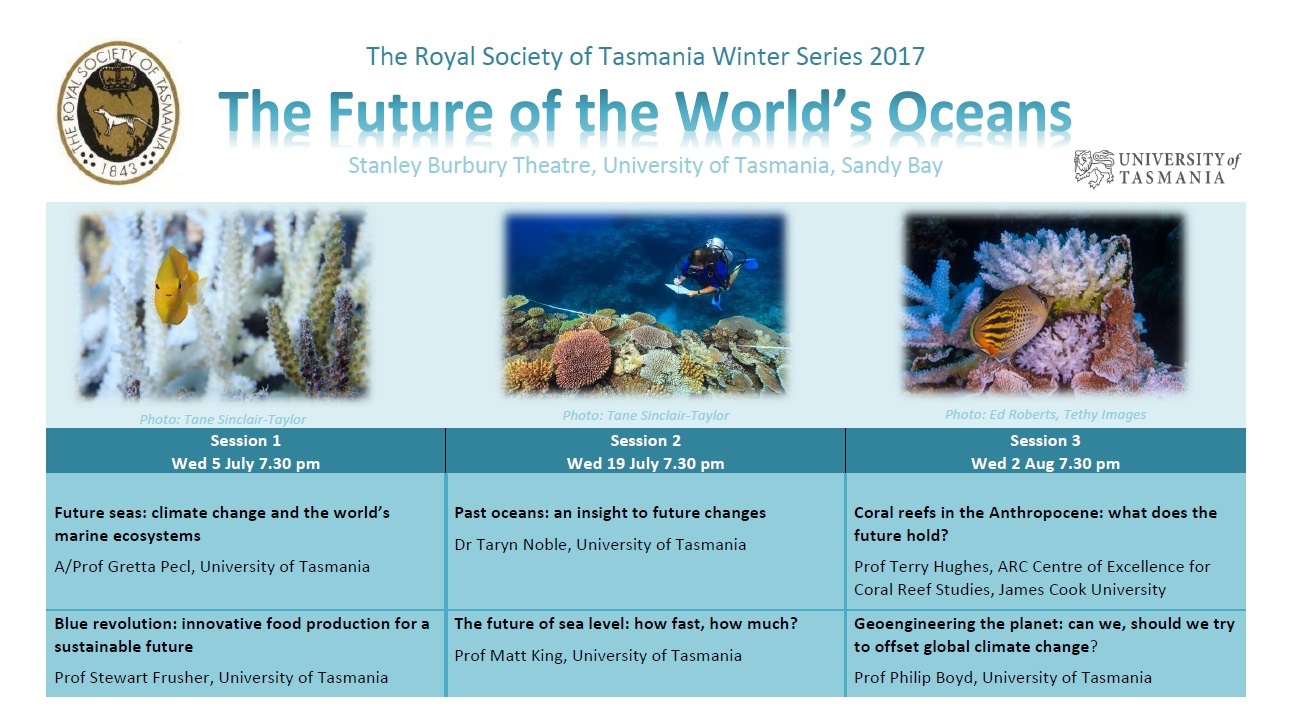
The Royal Society of Tasmania
Winter Lecture Series 2017
PROGRAM
SESSION 3 Wed Aug 2, 7.30 pm
Chair: Prof Jan McDonald
- Coral reefs in the Anthropocene: what does the future hold? – Distinguished
Professor Terry Hughes, Australian Research Council (ARC) Centre of Excellence for Coral Reef Studies, James Cook University
Coral reefs will still be alive and reasonably well in 100 years’ time, but only if we try a lot harder to secure their future. Over the coming centuries reefs will run the gauntlet of climate change, when rising temperatures will transform them into new configurations unlike anything previously experienced by humankind. Returning coral reefs to past configurations is no longer an option. Instead, the global challenge is to steer reefs into the future in a way that maintains them as functioning and sustainable ecosystems. This is a confronting message, but ultimately an optimistic one. The most important and difficult challenge is to achieve the COP21 Paris Agreement targets of 1.5-2C of global average warming, because business-as-usual emissions of greenhouse gasses will certainly destroy reefs as we know them.
Terry Hughes is the Director of the Australian Research Council’s Centre of Excellence for Coral Reef Studies, headquartered at James Cook University in Townsville. His research interests encompass the biology of coral reefs, their evolution and governance. A recurrent theme in his studies is the application of new scientific knowledge towards improving management of marine environments. Terry conducted widespread aerial surveys of the Great Barrier Reef in 2016 and 2017 to measure the extent and severity of back-to-back coral bleaching due to global warming.
- 2. Geoengineering the planet: can we, should we try to offset global climate change? – Prof Philip Boyd, UTas
Geoengineering is defined as a deliberate intervention in the Earth system of a nature and scale intended to counteract human-induced climate change and its impacts. Two distinct forms of climate intervention have been proposed: large scale removal and storage of the greenhouse gas carbon dioxide, or the reflection of a proportion of incoming solar radiation back into space. It has become clear from the recent COP21 Climate Agreement in Paris in late 2015, that in order to limit global temperature rise to no more than 2C, some form of ‘negative emissions’ will probably be required. In the absence of enough climate mitigation, could geoengineering help us to meet the COP21 targets to limit warming? In this presentation Philip Boyd will discuss both the benefits and challenges of intervening in Earth’s climate.
Professor Philip Boyd is an ARC Laureate Fellow at the Institute for Marine and Antarctic Studies in Hobart. He currently co-chairs the UN GESAMP Working Group 41 on marine geoengineering. Boyd has worked in the field of ocean biogeochemistry for over two decades, examining the role of iron enrichment in setting ocean productivity. He successfully co-ordinated two of the largest scientific ocean manipulation studies to date (large enough to be seen from space) which have provided indirect insights into marine geoengineering. Professor Boyd has also written widely on the scientific, socio-economic and geo-political aspects of geoengineering, including contributing to the UNESCO Guide to Policymakers on ocean iron fertilisation.
PREVIOUS SESSIONS:
SESSION 1 Wed July 5, 7.30pm
Chair: Prof Ian Allison AO AAM FAA
Future Seas: climate change and the world’s marine ecosystems – A/Prof Gretta Pecl, UTas
Our oceans are important for our culture, and are major sources of food production, recreation and employment with relevance at local, regional and international scales. However, our oceans are changing rapidly and understanding the implications of climate change and how we can best adapt to these is a major global challenge facing society. One of the most pervasive effects of climate change is a universal major redistribution of life on Earth – as the climate warms, plants and animals are shifting polewards. These changes are largest in our oceans, compared with on land, and are greatest where the ocean is warming the fastest. Around the Australian coast are several ‘marine hotspots’, areas of the ocean that are in the top 10% for rates of warming and are experiencing extensive changes in the structure and function of marine ecosystems. Gretta’s talk will highlight some of the climate-driven changes occurring in our oceans, around Tasmania, other parts of Australia, and in regions like Madagascar where there are serious implications for food security. She will finish with a citizen science example of how Australians can become involved in marine research and help us better understand the implications of climate change in our local seas.
Gretta Pecl is an Associate Professor of marine ecology with broad interdisciplinary research interests and a passion for science engagement and communication with the public. Much of her current research centres around understanding climate change impacts in marine systems, and how our marine industries and communities may best adapt to these changes. She developed and leads the very successful national citizen science project Redmap Australia, the Range Extension Database and mapping project, which invites fishers and divers around our coastline to help monitor changes in our seas. Gretta is also currently working with international colleagues on a Global Network of Marine Hotspots to facilitate learning and communication among the world’s most rapidly warming ocean regions. Associate Professor Pecl is a Fulbright Fellow, an ARC Future Fellow, a University of Tasmania ‘Rising Star’ and the Editor-in-Chief of the international journal Reviews in Fish Biology and Fisheries.
- Blue revolution: innovative food production for a sustainable future – Prof Stewart Frusher, UTas
With over 70% of the Earth’s surface covered by the oceans it is not surprising that attention is turning to the oceans to meet some of the challenges associated with an increasing population. The global blue (or ocean) economy is predicted to double to US$3 trillion by 2030 and is poised to undergo a profound transition. Part of this transition will be the development of offshore infrastructures that underpin multiple industries including food and energy. As we venture into this new arena, we have the opportunity to re-think how we currently ‘farm’ our oceans. The “green revolution” may provide lessons that can usefully be applied to ensure that the development of offshore marine production systems is sustainable, environmentally appropriate and socially acceptable. This presentation will also highlight where there could be opportunities for Tasmania.
Professor Stewart Frusher undertook his tertiary education at James Cook University in North Queensland after which he joined Australian Volunteers Abroad and worked on commercial and artisanal fisheries in Papua New Guinea. He subsequently worked at the Australian Institute of Marine Science in coastal ecosystems and aquaculture before coming to Hobart in 1992. Over the last couple of decades, he has led the Fisheries Program, Coasts and Estuaries Program and the Climate Change Impacts and Adaptation theme at the University of Tasmania. He is currently Director of the Centre for Marine Socioecology, which brings together researchers from the University of Tasmania, CSIRO and the Australian Antarctic Division across broad disciplines to focus on multiple use management of the marine domain.
SESSION 2 Wed July 19, 7.30 pm
Chair: The Lieutenant Governor, the Honourable Justice Alan Blow OAM
- Past oceans: an insight to future changes – Dr Taryn Noble, UTas
Oceans play an important role in global climate. So far 40% of the anthropogenic carbon and 90% of the heat released into the atmosphere since industrialisation has been absorbed by the Southern Ocean. As well as being an important region for the exchange of carbon dioxide and heat, the Southern Ocean acts as thermal barrier isolating the Antarctic ice sheet from the warmer tropics. Oceanographic measurements over the past few decades document significant changes in the characteristics of Antarctic Bottom Water, a key component of the global circulation system, which is becoming warmer and fresher. Understanding how ocean circulation has changed along the Antarctic margin is vital for understanding how the Antarctic ice sheet will respond to warming of the surrounding ocean. Marine archives, such as marine sediment cores, can provide a wealth of information about how the global ocean has changed from hundreds to thousands and millions of years ago. Past climate records can also provide analogues to the current climate warming. Dr Noble will discuss how we can reconstruct the role of oceans in regulating our planet’s past climate, and what lessons we are likely to learn for the future.
Dr Taryn Noble is a marine geochemist at the Institute of Marine and Antarctic Studies (IMAS), University of Tasmania. Taryn received her PhD from the University of Cambridge in 2012 on paleoceanography of the Southern Ocean. In 2016 she was awarded a SIEF John Stocker Postdoctoral Fellowship. Taryn’s research interests involve using marine sediment cores and seawater to study past ocean circulation and the role oceans play in climate. Her current research is focused on understanding the role of ocean circulation in melting the Antarctic ice shelves during the last deglaciation.
- The future of sea level: how fast, how much? – Prof Matt King, UTas
Antarctica, Greenland and the small glaciers around the globe are together losing hundreds of billions of tonnes of ice into the ocean each year. As the planet has warmed the oceans have expanded, and these factors have driven sea-level rise. But what does the future hold? How fast will sea level rise in the coming decades? The accurate answer to that question depends both on human influences on the climate and the uncertain role of the awakening giant of the vast Antarctic Ice Sheet. Future changes in Antarctica will not only have an important effect on the global average rate of sea-level rise but will also determine which regions of the globe will suffer the most drastic effects.
Professor Matt King completed a Bachelor of Surveying at the University of Tasmania before undertaking a PhD using surveying data to quantify changes in the motion of a large floating Antarctic ice shelf. He then moved to the UK where he researched applications of GPS positioning. Matt is Professor of Polar Geodesy and an ARC Future Fellow at the University of Tasmania where he works on observing and modelling the Antarctic Ice Sheet, sea-level change and the changing shape of Earth. Matt has travelled to both Antarctica and Greenland, and in 2015 the Royal Society (London) awarded him the Kavli Medal and Lecture for his work that contributed to the first reconciled estimate of Antarctica and Greenland’s contribution to sea-level change. Matt is President of the Royal Society of Tasmania.
The Future of Humanity – Professor Barry Brook – Free lecture, all welcome: Royal Society Room TMAG @8 pm Tuesday June 6
Humans have persisted in our modern evolved form for about two hundred millennia, and are now a dominant force of nature on planet Earth. But are we near the end, or closer to the beginning, of our span as a species? I will consider some forecasts of existential environmental threats facing humanity during the 21st century, and speculate on the possible long-term future of humanity if it reaches beyond this zone of immediate global risk.
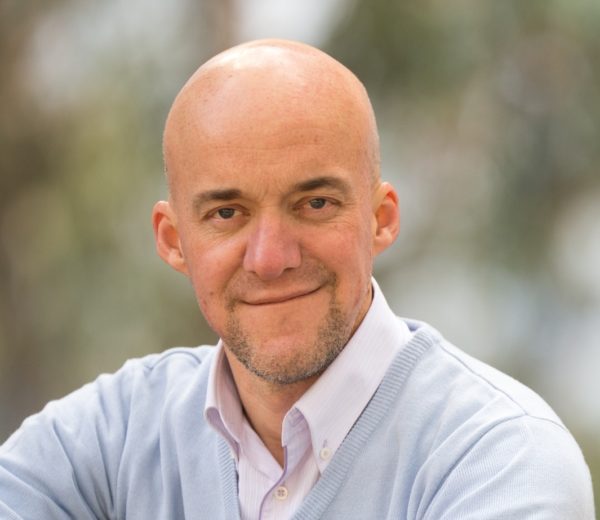 Barry Brook, an ecologist and modeller, is an ARC Laureate Fellow and Professor of Environmental Sustainability at the University of Tasmania. He is a highly cited scientist, having published three books, over 300 refereed papers, and many popular articles. His awards include the 2006 Australian Academy of Science Fenner Medal and the 2010 Community Science Educator of the Year. His research focuses on the impacts of global change on biodiversity, ecological dynamics, forest ecology, paleoenvironments, energy, and simulation models.
Barry Brook, an ecologist and modeller, is an ARC Laureate Fellow and Professor of Environmental Sustainability at the University of Tasmania. He is a highly cited scientist, having published three books, over 300 refereed papers, and many popular articles. His awards include the 2006 Australian Academy of Science Fenner Medal and the 2010 Community Science Educator of the Year. His research focuses on the impacts of global change on biodiversity, ecological dynamics, forest ecology, paleoenvironments, energy, and simulation models.
The link to his research group’s website: http://ecological-dynamics.org
Melting in the Earth – complexity, diversity and a key to understanding “Seismic Shifts” and “Tectonic Plates” Prof Emeritus David Green Royal Society Room 8 pm 2 May 2017
The prestigious R M Johnston Memorial Medal, established in 1920 and awarded to a scholar of great distinction, has been won by Prof David Green AM, FAA, FRS. Born and educated in Tasmania, David Green is internationally recognised as a leader in experimental igneous petrology. It is an honour for The Royal Society of Tasmania to offer acknowledgment to David Green’s scholarship with this medal. He will deliver the R M Johnston Memorial Lecture on Tuesday 2 May in the Royal Society of Tasmania Room, TMAG Hobart, at 8 p.m. All interested people are warmly invited to attend.
“Height, Health and History” Professor Hamish Maxwell-Stuart, University of Tasmania – 4th April 8 pm Royal Society Room TMAG
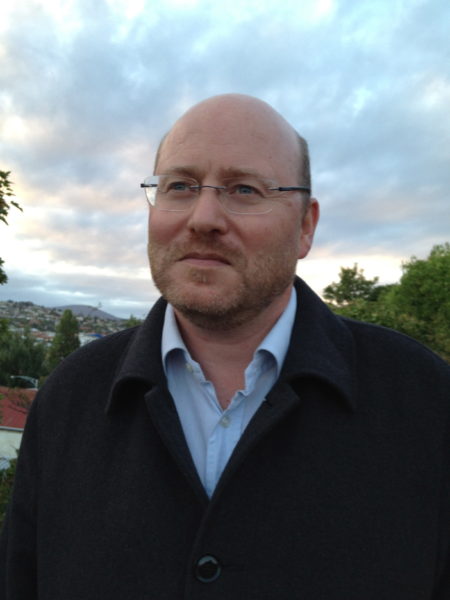 Adult height and juvenile growth patterns are now widely used as indicators of health. The extent to which any individual will reach their biologically programmed height depends upon the conditions that they encounter in utero and early childhood. As the genetic determinants of height change little between one generation and another, fluctuations in stature between different birth cohorts can reveal much about past childhood circumstance. Over the last forty years historians have turned to historical height records in order to construct data series that can measure the biological standard of living. These have revealed some sobering insights into the impact of industrialisation and other societal transformations on the health of past populations. Settler Tasmania is blessed with particularly abundant historical height data. This paper will outline the ways in which this information can be used to explore the impact of changing conditions on Tasmanian living standards in the 19th and early 20th century.
Adult height and juvenile growth patterns are now widely used as indicators of health. The extent to which any individual will reach their biologically programmed height depends upon the conditions that they encounter in utero and early childhood. As the genetic determinants of height change little between one generation and another, fluctuations in stature between different birth cohorts can reveal much about past childhood circumstance. Over the last forty years historians have turned to historical height records in order to construct data series that can measure the biological standard of living. These have revealed some sobering insights into the impact of industrialisation and other societal transformations on the health of past populations. Settler Tasmania is blessed with particularly abundant historical height data. This paper will outline the ways in which this information can be used to explore the impact of changing conditions on Tasmanian living standards in the 19th and early 20th century.
Hamish has a PhD from the University of Edinburgh and worked for the Wellcome Unit for the History of Medicine, University of Glasgow, before migrating to Tasmania in 1997. He is currently writing a history of collective action in convict Australia as well editing a special issue of Social Science History on identifying and controlling for selection bias in historical work. He has contributed to a number of historical interpretation projects, the latest of which is Pandemonium launched in the Penitentiary Chapel, Campbell Street, Hobart in November 2016.
Annual General Meeting 7 March 7.30 pm Central Gallery TMAG followed by free lecture 8 pm
There will be a special meeting to consider important changes to our Rules followed by the AGM to consider Reports and the election of officers. A short break when drinks will be available then our guest lecturer Kathryn Medlock will present “Where did all the tigers go?”
Kathryn Medlock is Senior Curator of Vertebrate Zoology at the Tasmanian Museum and Art Gallery (TMAG).
The TMAG collection contains 94 registered thylacine specimens, making it one of the largest and most diverse collections of this extinct marsupial carnivore in the world’s museums.
All interested people are welcome
No admission charge
More information: www.rst.org.au

Where did all the tigers go? The Tasmanian Museum thylacine collection 7 March 8 pm @Central Gallery TMAG Hobart
Where did all the tigers go? The Tasmanian Museum thylacine collection 7 March 8 pm @Central Gallery TMAG Hobart
The Royal Society of Tasmania invites you to attend a lecture by Kathryn Medlock:
Kathryn Medlock is Senior Curator of Vertebrate Zoology at the Tasmanian Museum and Art Gallery (TMAG).
The TMAG collection contains 94 registered thylacine specimens, making it one of the largest and most diverse collections of this extinct marsupial carnivore in the world’s museums.
All interested people are welcome
No admission charge
More information: www.rst.org.au

AGU Chapman Conference on Submarine Volcanism: New Approaches and Research Frontiers
Exploration of volcanoes in our oceans is frontier science. It is the focus of an AGU Chapman Conference on Submarine Volcanism: New Approaches and Research Frontiers. The conference will be held here in Hobart between the 29th of January and the 3rd of February 2017, gathering many of the world’s experts in this field.
The conference organising committee invite The Royal Society of Tasmania members to a series of exciting evening public lectures. Bring along your family and friends! All will be held in the Menzies Centre, Lecture Theatre 2.
LECTURE 1: Monday 30th of January 6-7 PM (Australian Eastern Daylight Savings Time)
Professor Deborah Kelley (University of Washington, USA).
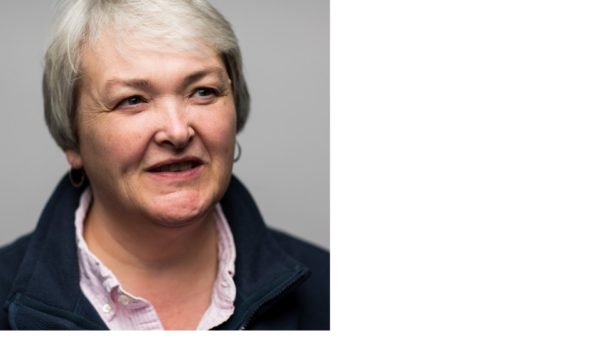
Title: Bringing Underwater Volcanoes, Hot Springs, and the Life That They Host Directly Into Your Living Rooms Live 24/7
Professor Kelley’s research is on active submarine volcanoes, hydrothermal vents and associated life. She is director of the National Science Foundation Oceans Observatories Initiative where cables have been laid out across key sites in the northwest Pacific Ocean. Live, direct streaming of these sites is now accessible to anyone. Now we can observe the secrets of some oceanic volcanoes, just as we observe the stars. This is an exciting real-time experiment on large scale and allows scientists and educators to view some of the features of Axial Seamount Volcano, a volcano which is more than 400 km offshore and in water up to 5 km deep. Her talk will include videos of some of the amazing features of this very active volcano.
LECTURE 2: Tuesday 31st of January 6-7 PM (Australian Eastern Daylight Savings Time)
Dr. Adam Soule (Woods Hole Oceanographic Institution, USA).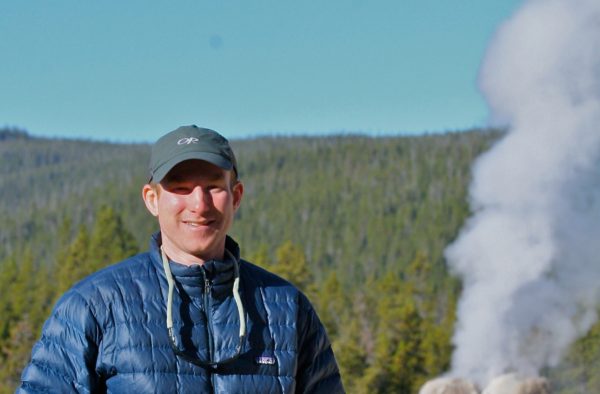
Title: Deep-Sea Synergy: Humans, Robots, and the Most Active Volcanic Systems on Earth
Dr Adam Soule investigates the dynamic interactions of heat and rocks in the deep earth with the crust and hydrosphere. He is involved in projects on mid-ocean ridges and young rifted margins with a special view to understanding submarine explosive eruptions. He is a veteran of many cruises exploring the floor of the oceans in a variety of tectonic settings including the East Pacific Rise, Mid-Atlantic Ridge as well as the Guaymas Basin near California. He is experienced in the use of robotic submersibles and his presentation will summarize the intersection of engineering and science that has led to the current use of underwater vehicles to study deep-sea volcanic processes. Through a discussion of some of the important discoveries in volcano science they enabled, he will explore how near- and long-term technological advances may shape the future volcanic research in the deep sea.
LECTURE 3: Thursday 2nd February 6-7 PM (Australian Eastern Daylight Savings Time)
Dr. Cornel de Ronde (GNS New Zealand)
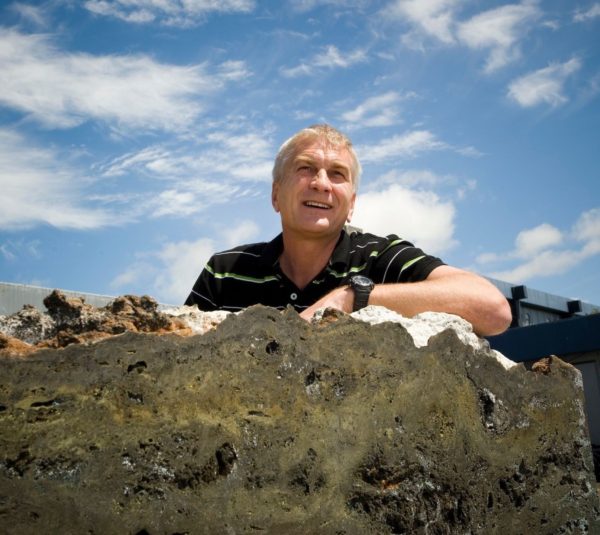
Title: Exploration of Intraoceanic Arc Seafloor Hydrothermal Systems: What do we Know?
Dr. Cornel de Ronde’s exploration of hydrothermal vents has revealed a world of remarkable spectacle, including ‘lakes’ of molten sulfur, chimneys expelling liquid CO2, spectacular eruptions on the seafloor and never before seen animals. The 6,900 km of intraoceanic arcs in the world equates to hydrothermal emissions equal to ~10% of that from the 60,000 km of mid-ocean ridges with a similar incidence of venting. Arc volcanos can host hot gas venting on top of cones, or in calderas, from near surface to water depths of 2 km. After expeditions to many volcanoes, including the long chain of underwater volcanoes that stretches from New Zealand north to Tonga, Dr. de Ronde has compiled information from over 50 volcanic systems, to recognize three main vent types. 5% of hydrothermal vent systems are volcanic and are in various stages of eruption. The second, most common type (75%) expel magmatic gasses that have interacted with seawater near the seafloor and the third type forming 20% of hydrothermal vents expel less gas, but emit plumes of metal complexes rich in copper, zinc and gold.
For more information please visit the website
http://chapman.agu.org/submarinevolcanism/
Any enquiries contact Dr. Karin Orth
(03)6226 1921

